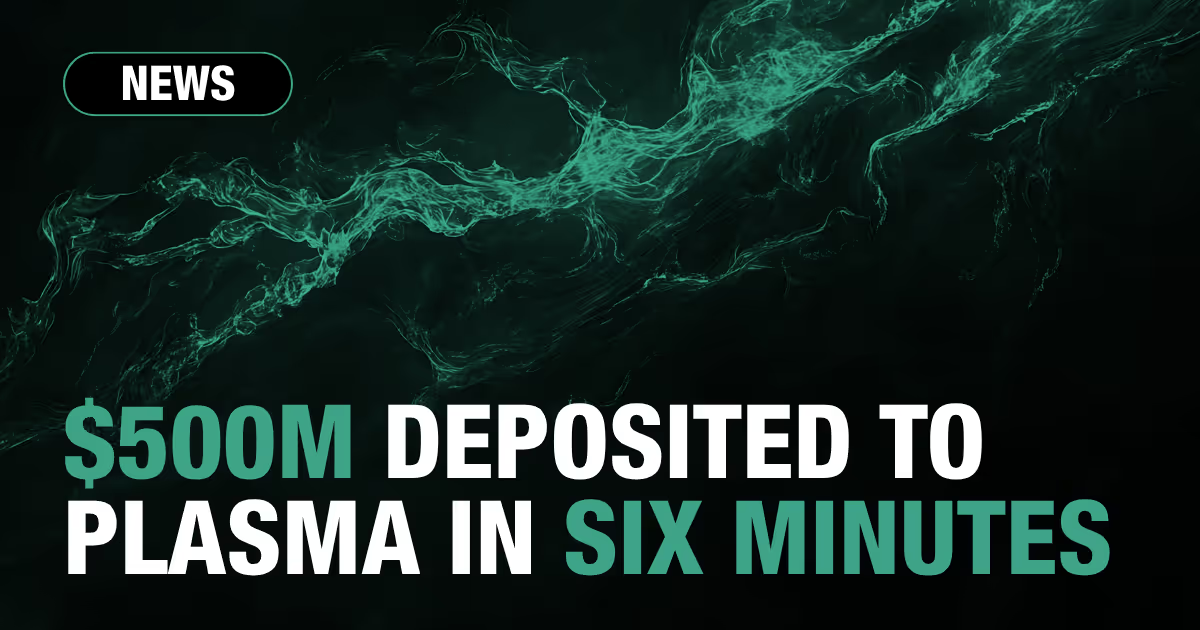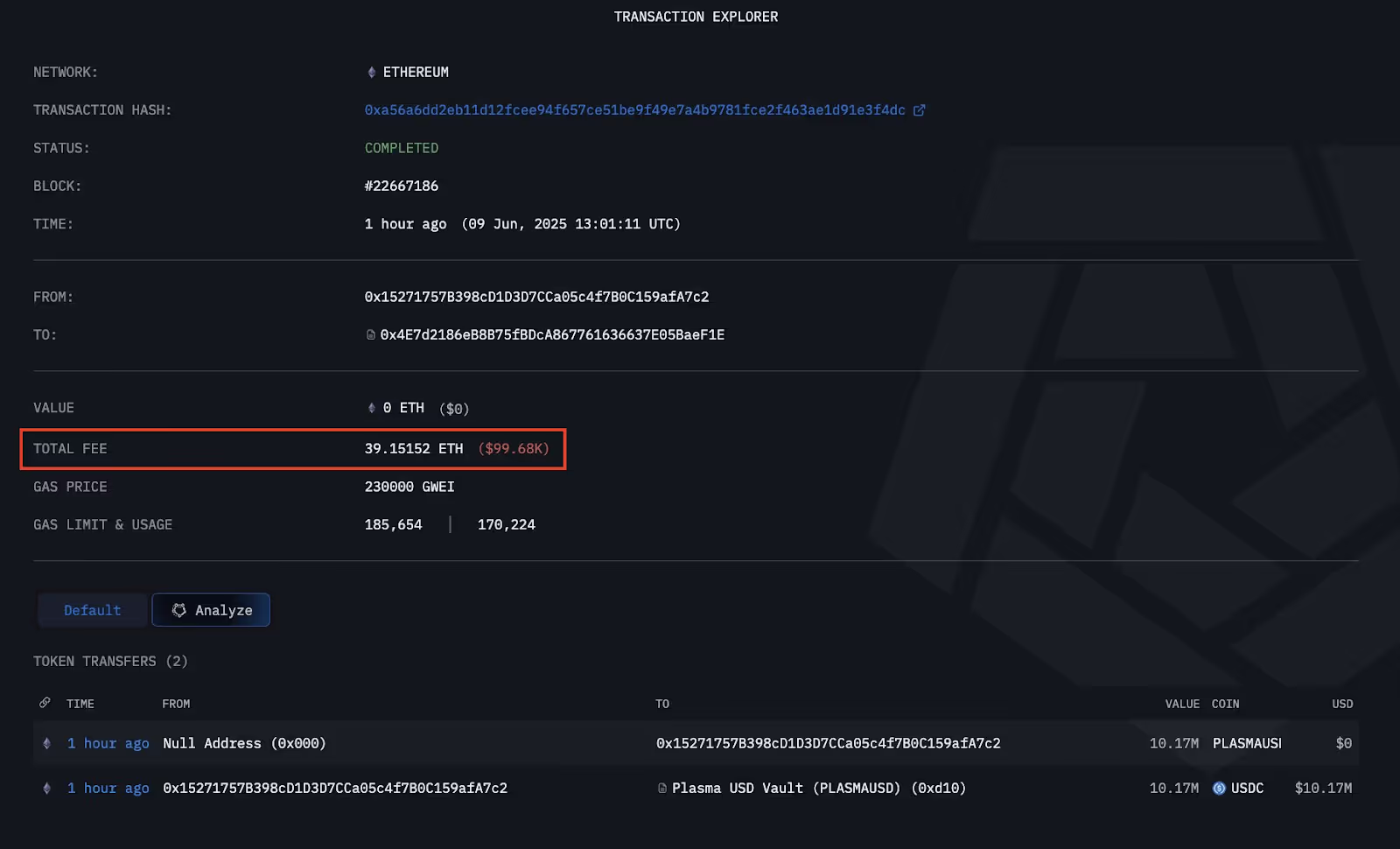June 10, 2025
at
12:00 am
EST
MIN READ
$500M Deposited to Plasma in Six Minutes

Deposits for stablecoin payments sidechain, Plasma, opened yesterday, with users depositing a total of $500M into the protocol in just six minutes. The deposit initially opened with a cap of $250M, but was filled almost instantly. The cap was then raised to $500M, which was quickly snapped up over the next five minutes. A single user, 0x152, spent 39.15 ETH or slightly under $100K in gas just to get in a deposit of $10M.
Plasma is a purpose-built stablecoin blockchain, designed with high speed transactions and zero fees in mind. The chain is settled on Bitcoin, while still maintaining full EVM-compatibility. With the backing of Bitfinex and Tether, Plasma has become one of the hottest proxy bets on the stablecoin narrative, especially with the success of Circle’s recent IPO.

The staggering 39.15 ETH gas fee spent by a single user highlights the intense competition for blockspace during highly anticipated events. When a protocol launch has a limited deposit cap, it creates a "gas war," where participants aggressively outbid each other with transaction fees to ensure their deposit is processed before the cap is filled. This user effectively paid a 1% premium ($100K on a $10M deposit) as a strategic cost to guarantee their allocation. This level of spending demonstrates extreme conviction in Plasma's future success, where the potential returns are expected to far outweigh the exorbitant entry fee.
Plasma’s decision to maintain full EVM compatibility is a crucial strategic choice designed to bootstrap its ecosystem rapidly. The Ethereum Virtual Machine (EVM) is the execution engine that powers the vast majority of DeFi. By being EVM-compatible, Plasma allows developers to port existing Ethereum applications and tooling with minimal effort. This grants immediate access to a massive pool of established developers, protocols, and users who can interact with the new chain using familiar wallets and interfaces like MetaMask, dramatically lowering the barrier to entry and accelerating network effects.
The architecture of an EVM-compatible chain that settles on Bitcoin represents a novel hybrid approach. While the EVM provides a flexible and well-supported environment for smart contract execution, using Bitcoin for settlement aims to leverage its unparalleled security, decentralization, and finality. This model attempts to combine the best of both worlds: the rich application ecosystem of Ethereum with the perceived gold standard of blockchain security from Bitcoin. This unique combination is a key part of Plasma's value proposition in a crowded landscape of competing layer-1 and layer-2 solutions.





























































































































































































































.png)